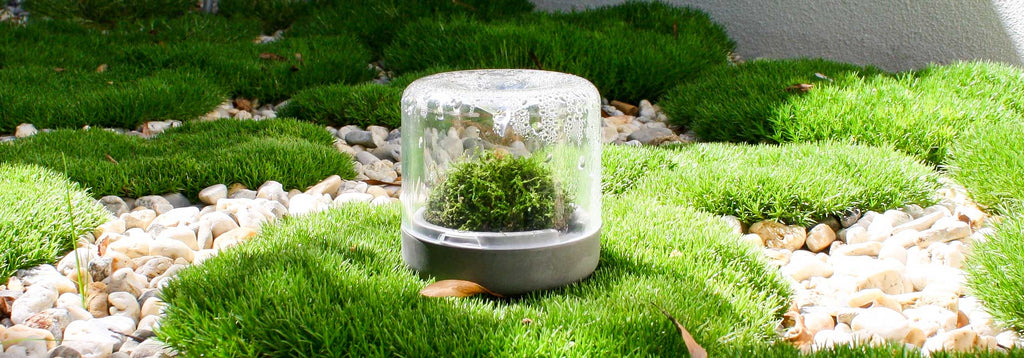Mosses are small flowerless plants that typically grow in dense green clumps or mats, often in damp or shady locations. Sanctuary highlights the beauty of these tiny bryophytes and draws you in to its perfect, miniature world.
Sourcing Moss
Different varieties of moss can be found everywhere if you take the time to look. Even in urban areas, so no need to take moss from protected and national parks (this is not cool and mostly illegal!). Chill out on a relaxing walk around your neighbourhood and collect a nice lush piece for your Sanctuary. Even brown, dry moss can be returned to life in a few hours of deep rehydration. You can clean the moss before you use it but sometimes you get exciting surprises if you just let it be… like mushrooms and tiny flowers.
If you are unable to collect your own moss, most florists should be able to assist or point you in the right direction. There are options to buy online, just be sure you are using a reputable supplier. If you are in the Australian states SA, NT, Vic, NSW, and QLD we are able to sell our moss to you.
Alternate moss suppliers:
The Art of Collecting Moss
The trick is… remember where you collected your moss! This environment will inform you on exactly what your Sanctuary needs. Super damp (like the Fontinalis) or well drained (like the Dicranum). Indirect sun, or none at all? Take note of the environment and you are set.
- Rescuing Moss: Remove it from places it would inevitably be destroyed.
- Please remember, not to take moss from protected forests or parks.
- Harvesting from your property: Take only small sections, leave enough for colonies to recover. You only need of 6-7cm in diameter of moss to fill Sanctuary S.



